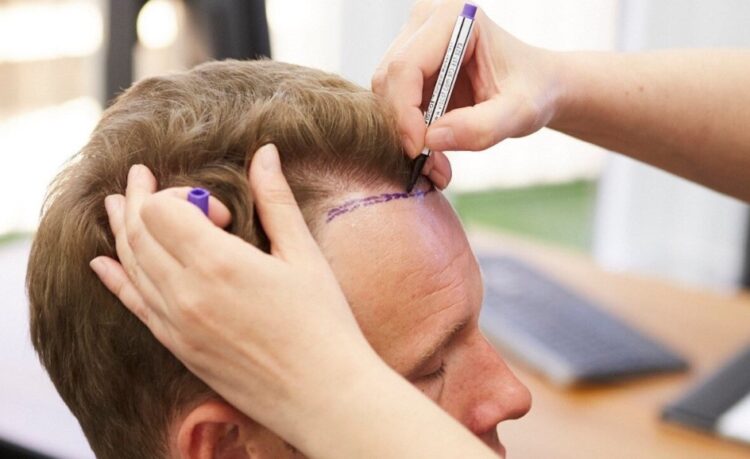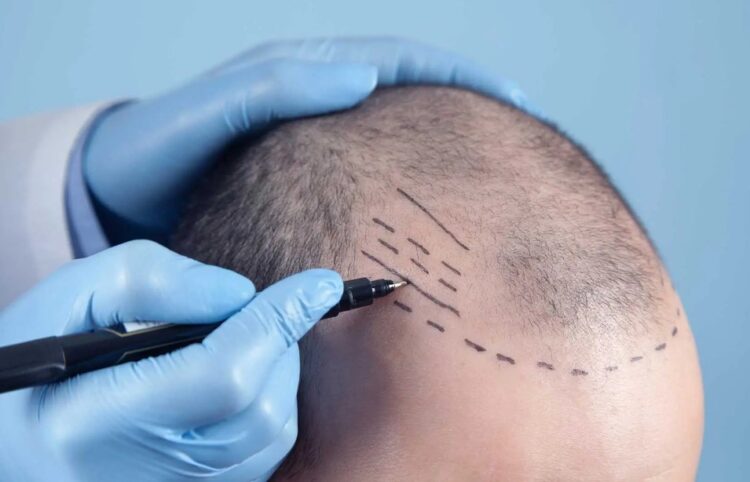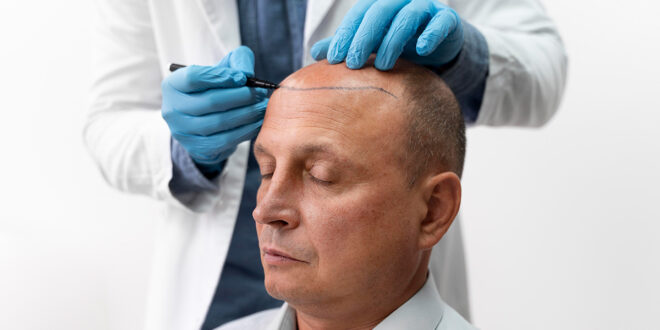You’re considering a hair transplant, a procedure that has revolutionized how we address hair loss. This article will guide you through the various hair transplant techniques available, their methodologies, and an overview of the costs involved, helping you make an informed decision.
A hair transplant is a surgical technique that moves hair follicles from one part of your body, typically the ‘donor site,’ to the balding or thinning part, known as the ‘recipient site.’ It’s primarily used to treat male pattern baldness. This procedure not only enhances your appearance but also boosts self-confidence.
4 Types of Hair Transplant Techniques
Each hair transplant technique has its unique approach and is suited for different types of hair loss.
1. Follicular Unit Transplantation (FUT)
In FUT, a strip of skin with hair follicles is removed from the donor area, and individual follicular units are extracted. This method covers large bald areas but leaves a linear scar.
2. Follicular Unit Extraction (FUE)
FUE involves extracting individual hair follicles directly from the scalp. It’s less invasive than FUT and doesn’t leave a linear scar, making it suitable for those who prefer short hairstyles.
3. Direct Hair Implantation (DHI)
DHI uses a specialized tool for extracting and implanting hair follicles. This technique offers more control over the depth and direction of the implanted hair, which is ideal for achieving a natural-looking hairline.
4. Robotic Hair Transplant
This advanced technique employs robotic systems for enhanced follicle extraction and placement precision. It’s highly efficient and reduces human error.
Comparing Hair Transplant Techniques

When considering a hair transplant, understanding the differences between each technique is crucial for making an informed decision. Here, we delve deeper into comparing the primary methods: FUT, FUE, DHI, and Robotic Hair Transplant.
Efficiency in Covering Baldness
FUT is often preferred for treating extensive baldness because it can cover large areas in fewer sessions. FUE and DHI are more suitable for detailed work, like refining the hairline or filling in smaller patches.
FUT typically leaves a linear scar, which can be concealed under longer hair. FUE and DHI result in minimal scarring, with tiny dots that are less noticeable, making them ideal for those who prefer shorter hairstyles.
Precision and Natural Look
DHI provides greater precision in hair placement, offering a more natural look, especially at the hairline. Robotic transplants combine the efficiency of FUE with enhanced precision, reducing human error.
Overall Success Rate and Longevity of Results
While all techniques have high success rates, the longevity and appearance of the results can vary, influenced by the skill of the surgeon and the technique used.
Cost Analysis of Hair Transplant Techniques

Hair transplant in Turkey is a critical factor for many. This section breaks down the various costs of each technique, helping you understand what influences the overall price.
Factors Influencing Cost
- Geographic location ─ Costs can vary significantly based on the country or city where the procedure is performed.
- Surgeon’s expertise ─ Highly experienced surgeons typically charge more, but their expertise can lead to better results.
- Number of grafts ─ The more grafts needed, the higher the cost.
- The technique used ─ FUE and DHI generally cost more than FUT due to their labor-intensive nature.
Average Cost Range
- FUT tends to be less expensive, with costs ranging widely based on the extent of the transplant.
- FUE and DHI are more costly due to the detailed nature of the procedures.
- Robotic transplants, being the most advanced and least labor-intensive, often have a higher price tag.
- Preoperative assessments, postoperative care, and any necessary medications or special shampoos may contribute to the cost.
Choosing the Right Clinic and Surgeon
The success of your hair transplant largely depends on the surgeon’s skill and experience and the clinic’s quality. Look for accredited facilities and board-certified surgeons with a track record in hair transplants. Consultations are vital for understanding the approach and setting realistic expectations.
A hair transplant can be a life-changing decision. Understanding the different techniques and their costs helps you make an informed choice. Consulting with a qualified professional like Dr. Vivo Hair Clinic is the first step toward a successful outcome.
 Hi Boox Popular Magazine 2024
Hi Boox Popular Magazine 2024



